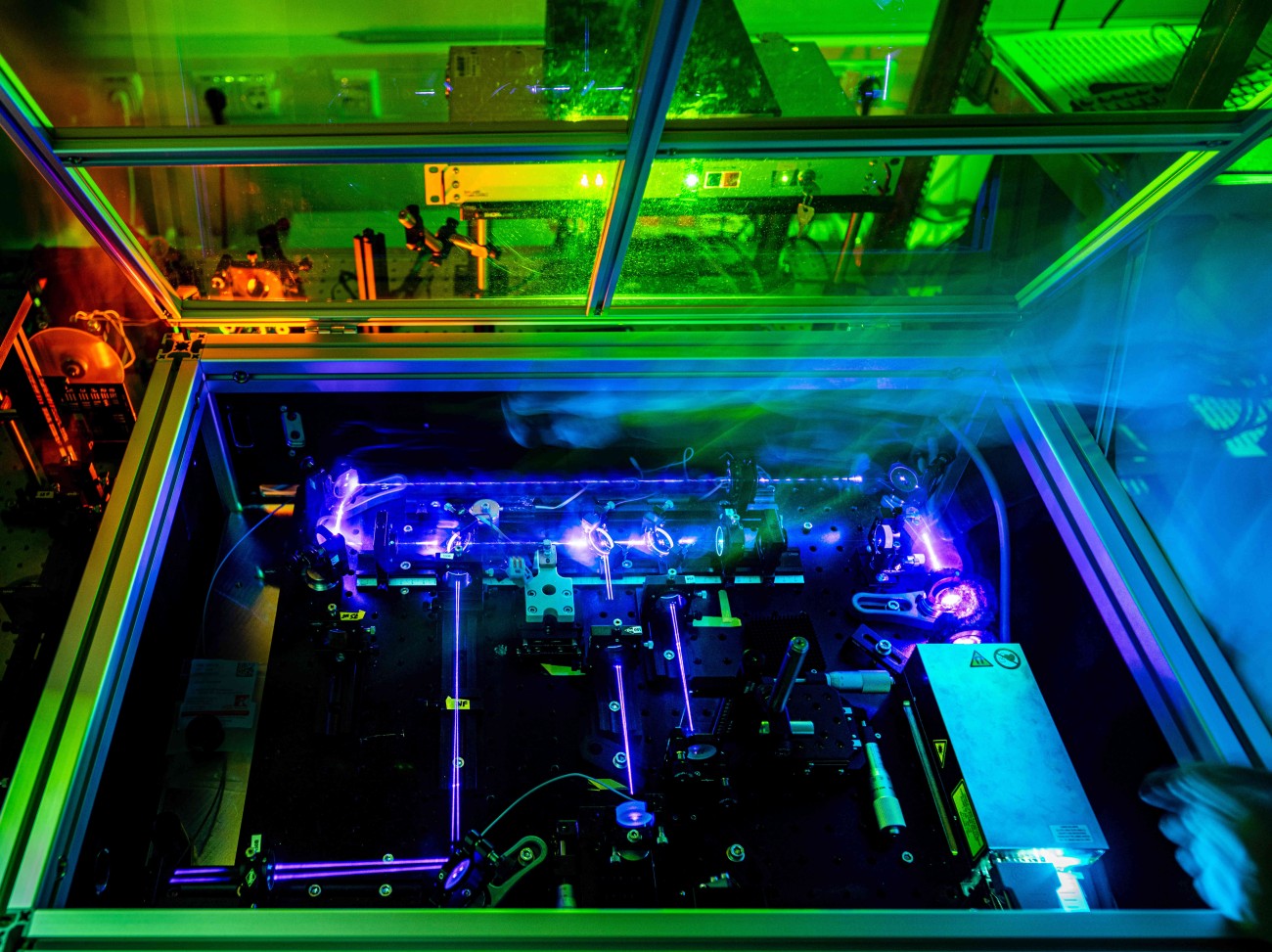Motivation
Marker-free chemical-selective imaging using infrared microscopy is an important tool in the analysis of cell and tissue samples and can, for example, help to distinguish healthy cells from cancer cells and thus provide improved diagnostics. At the same time, detection of infrared light is not optimal due to low detection efficiencies and intrinsically limited signal-to-noise ratio. This problem can be circumvented with so-called quantum imaging with non-detected light, where sample interaction in the infrared but detection exclusively in the visual spectral range is possible.
Goals and procedure
The aim of the project is the clinical demonstration of a novel tumor diagnostics based on quantum optical imaging by morphological and chemical tissue evaluation. The main field of application will be pathological tissue diagnostics. Pathological changes in tissue samples are manifested in molecular structure and morphology. The gold standard of current pathological diagnostics is contrast techniques that stain specific molecules and light microscopy to visualize their distribution. A recent trend is digital pathology, which uses digital microscopes. IR-based imaging techniques tie in with digital pathology and add vibrational spectroscopic information to the contrast without requiring further labeling. This is performed efficiently using quantum imaging with non-detected light.
Innovation and perspectives
Quantum IR microscopy allows chemically selective imaging and thus the detection of tumor tissue but also other changes in tissue morphology. Here, using so-called quantum imaging with non-detected light, all measurements are performed in the visual spectral range, thus bypassing any difficult detection in the infrared (IR) spectral range interacting with the sample. This method will be combined with a microscopy system for the first time and tested in a clinical setting. In perspective, this allows the introduction of a new tool in cancer diagnostics. The principle can also be extended to other areas, such as the detection of pathogens.
Collaborators
Rapp OptoElectronic GmbH, Wedel / Germany
Leibniz-Institut für Photonische Technologien e.V., Jena / Germany
TOPTICA Photonics AG, Gräfelfing / Germany
Friedrich-Schiller-Universität Jena, Institut für Angewandte Physik, Jena / Germany
Universität Hamburg, Institut für Laserphysik, Hamburg / Germany
Universitätsklinikum Jena, Klinik für Hals-, Nasen- und Ohrenheilkunde, Jena / Germany
n-Hands GmbH & Co. KG, Idstein / Germany
Fraunhofer Institute for Applied Optics and Precision Engineering IOF, Jena/ Germany


